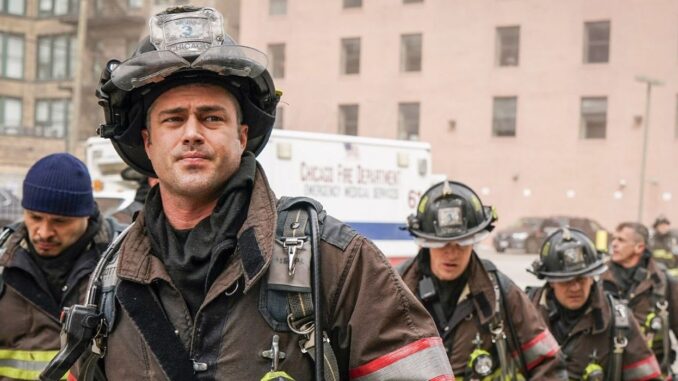
Forging Firefighters: How Chicago Fire Cast Bravely Embrace the Flames
The sirens scream, the buildings roar with fire, and through the chaos, figures clad in yellow and black move with precision and unwavering courage. This is the world of NBC’s “Chicago Fire,” a world of high-stakes rescue and unwavering camaraderie. But the intensity of the scenes depicted on screen isn't simply Hollywood magic; it's the result of dedicated training that aims to prepare the cast, both physically and mentally, to convincingly portray the real-life heroes they embody. The journey to becoming a believable firefighter on screen is a rigorous process that blends authentic techniques with theatrical adaptation, creating a potent and visceral portrayal of lives lived on the edge.
The foundation of this transformation lies in immersion. The cast doesn't just show up on set; they are thrust into a world that mirrors the training environment of real firefighters. From day one, they are introduced to the equipment – the heavy turnout gear, the cumbersome self-contained breathing apparatus (SCBA), and the tools of the trade, like the halligan bar and the K-12 saw. These objects are not merely props; they become extensions of their bodies, weapons against the relentless enemy of fire. The actors learn to don and doff the gear with practiced speed, understanding its limitations and benefits. They learn how to manage the weight of the SCBA, a vital piece of equipment that can quickly become a burden in a smoky environment. This hands-on experience instills a deep appreciation for the physical demands of the job and allows the actors to move with authenticity.
Beyond the equipment, the actors participate in drills and exercises that simulate real-life rescue scenarios. They learn how to breach doors, navigate through smoke-filled rooms, and perform victim extractions. These drills are often conducted under the watchful eye of real firefighters who serve as technical advisors on the show. These advisors provide invaluable insights into the proper techniques and procedures, ensuring that the actors’ movements and actions are not only believable but also safe. They guide the actors on how to read the signs of a developing fire, how to prioritize tasks in a chaotic environment, and how to communicate effectively in the face of extreme pressure.
The training extends beyond the purely physical realm. A crucial aspect of becoming a believable firefighter is understanding the mental fortitude required for the job. The cast often participates in simulations designed to test their decision-making abilities under pressure. They are confronted with ethical dilemmas, forced to prioritize lives, and make split-second decisions that can have life-altering consequences. This mental training helps them internalize the weight of responsibility that firefighters carry and allows them to portray the emotional toll of the job with nuance and sensitivity.
Of course, concessions must be made for the sake of safety and the demands of filming. The cast does not, and cannot, be subjected to the same level of danger as real firefighters. The fires they encounter are controlled, the smoke is often artificial, and stunt performers are used for the most dangerous sequences. However, the show strives to minimize the use of CGI and maximize the realism of the scenes by utilizing practical effects and allowing the actors to participate in as much of the action as possible. This creates a more authentic and visceral experience for both the actors and the audience.
Finally, the actors rely on each other, forming a tight-knit ensemble that mirrors the camaraderie of a real firehouse. They train together, learn together, and support each other through the physical and emotional challenges of portraying these brave individuals. This shared experience fosters a sense of trust and teamwork, which is essential for creating believable rescue scenes. They learn to anticipate each other's moves, communicate nonverbally, and rely on each other for support, mirroring the real-life bond that exists between firefighters.
In conclusion, the intense rescue scenes in "Chicago Fire" are not merely the product of clever camerawork and special effects. They are the result of a rigorous and comprehensive training regimen that prepares the cast to convincingly portray the bravery, skill, and resilience of firefighters. By immersing themselves in the world of firefighting, learning from real-life experts, and embracing the physical and emotional demands of the job, the actors of "Chicago Fire" forge a connection to the characters they portray, offering a glimpse into the lives of those who risk everything to save others. The training is a testament to the dedication of the cast and crew, who strive to honor the real-life heroes who inspire their work. The flames may be simulated, but the bravery and camaraderie on display are very real indeed.
